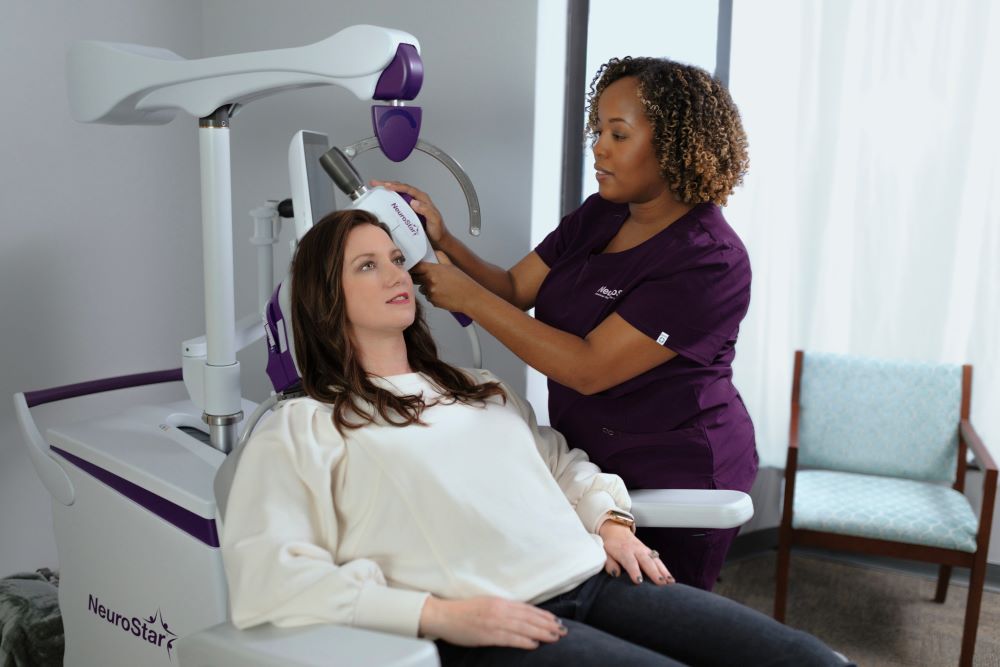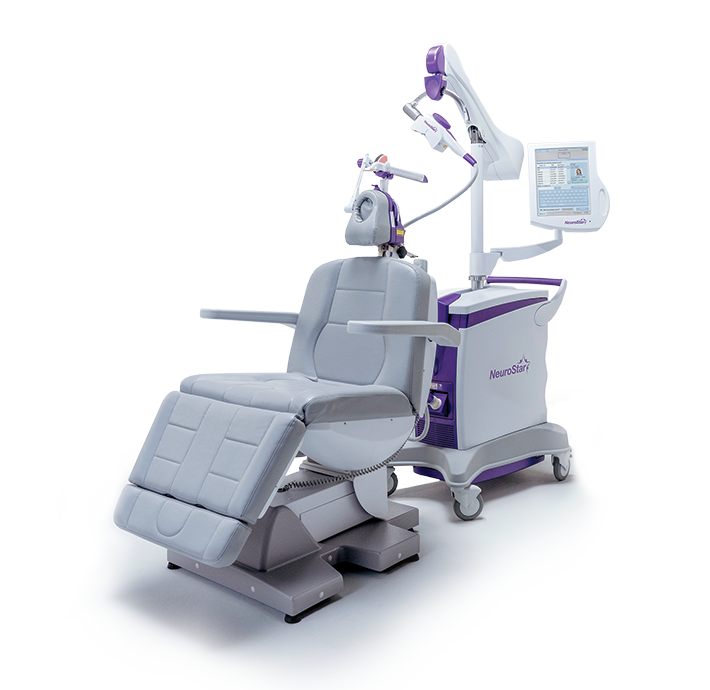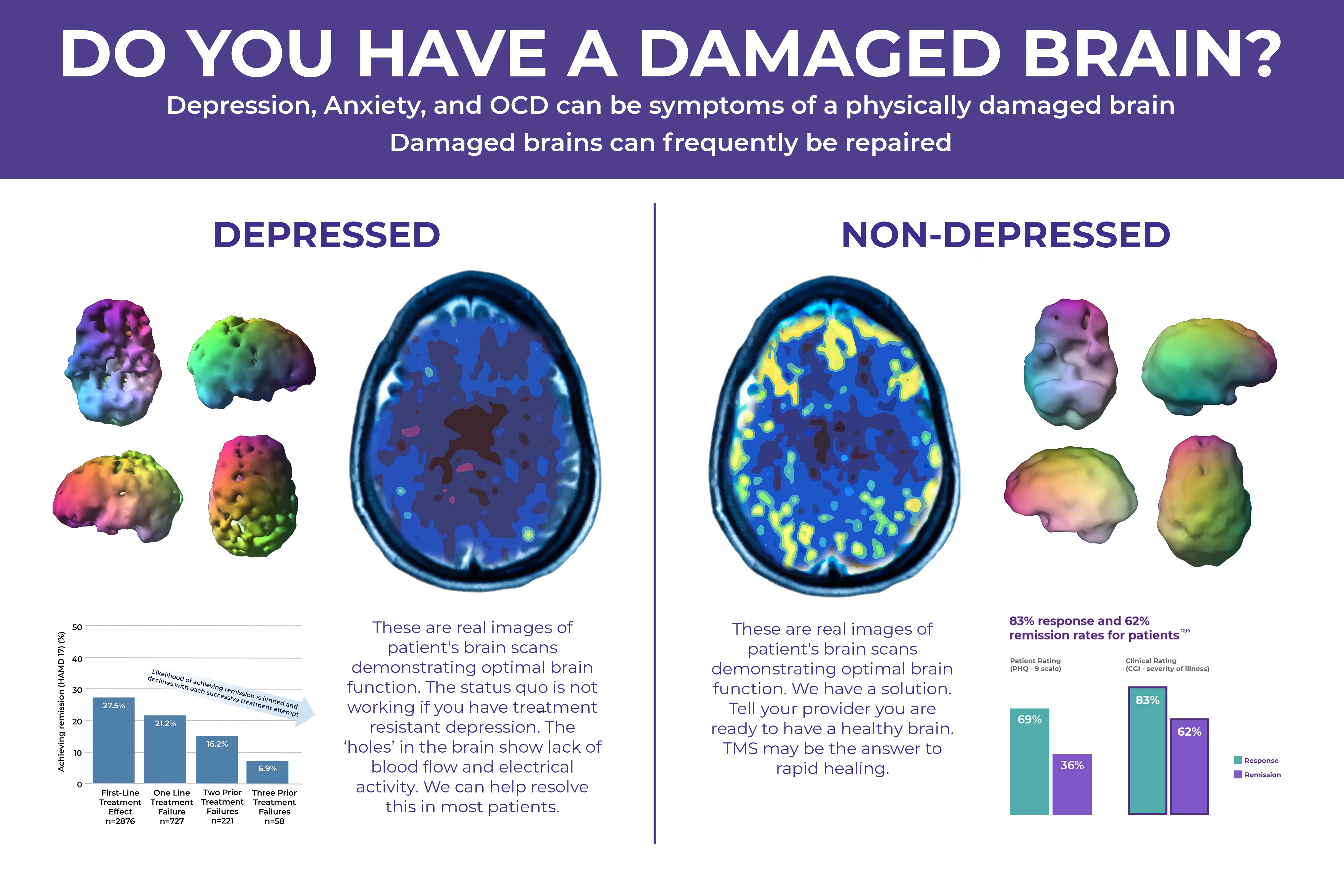
Transcranial Magnetic Stimulation (TMS)
If depression controls your life, know that you are not alone. In 2020, more than 20 million people in the U.S. had at least one major depressive episode. We are offering hope for remission daily with NeuroStar TMS Advanced Therapy, a proven depression treatment that lasts. Patients are experiencing over 83% reduction of symptoms and over 62% are experiencing relief from all symptoms (remission).
If you or someone you know is ready to find a new way forward, we are now offering NeuroStar TMS Therapy at our clinics, and encourage you to reach out to our experienced and dedicated team. Request your NeuroStar TMS evaluation appointment today at an Alleviant location near you. Fill out our online contact form or call 866-951-HEAL.
How NeuroStar TMS Advanced Therapy™ Works
NeuroStar is a safe, effective, non-drug treatment for Depression, Anxious Depression, and OCD. It uses Transcranial Magnetic Stimulation (TMS), precise magnetic pulses, to stimulate and target critical underactive areas of the brain. Neurotransmitters, chemical messengers, send signals and play a significant role in mood regulation helping to reduce or even eliminate symptoms.
NeuroStar therapy is easy, under 20 mins, and accessible for patients at all Alleviant Health Centers

What to expect
- All you have to do is show up and recline in a comfortable spa-like chair
- A small curved magnet is placed lightly on your head
- You remain awake, may feel tapping, and will hear a clicking sound
- Return to daily activities immediately
Key benefits include:
- Effective: 83% response, 62% remission rates
- SAFE: low risk of side effects. Numerous studies have demonstrated safety and efficacy
- Flexible: outpatient treatment in under 20min… continue to live your life
- Lasts: Benefits can last for years after treatment is completed
- Non-invasive: NeuroStar TMS therapy does not require any anesthesia or sedation

Our team is here to answer any questions.
Please contact Alleviant Health Centers at 866-951-HEAL
TMS Clinical Trials & Academic Studies
TMS Clinical Trials & Academic Studies
FAQs
To learn more about NeuroStar TMS therapy, please request an appointment for a NeuroStar evaluation at an Alleviant Health Center by completing our online contact form or calling 866-951-HEAL. Take our online questionnaire to see if you are a candidate today.
The NeuroStar Advanced Therapy System is indicated for the treatment of depressive episodes and for decreasing anxiety symptoms for those who may exhibit comorbid anxiety symptoms in adult patients suffering from Major Depressive Disorder (MDD) and who failed to achieve satisfactory improvement from previous antidepressant medication treatment in the current episode. The NeuroStar Advanced Therapy system is intended to be used as an adjunct for the treatment of adult patients suffering from Obsessive-Compulsive Disorder (OCD).
Important Safety Information
The most common side effect is pain or discomfort at or near the treatment site. These events are transient; they occur during the TMS treatment course and do not occur for most patients after the first week of treatment. There is a rare risk of seizure associated with the use of TMS therapy (<0.1% per patient).
NeuroStar Advanced Therapy is only available by prescription.
Visit neurostar.com for full safety and prescribing information.
REQUEST YOUR TMS EVALUATION
Request your appointment for TMS evaluation at an Alleviant Health Centers clinic closest to you by filling out the contact form. Please allow us 24 to 48 hours for our intake coordinators to process your request and reach out to you.
REQUEST YOUR TMS EVALUATION
Request your appointment for TMS evaluation at an Alleviant Health Centers clinic closest to you by filling out the contact form. Please allow us 24 to 48 hours for our intake coordinators to process your request and reach out to you.

